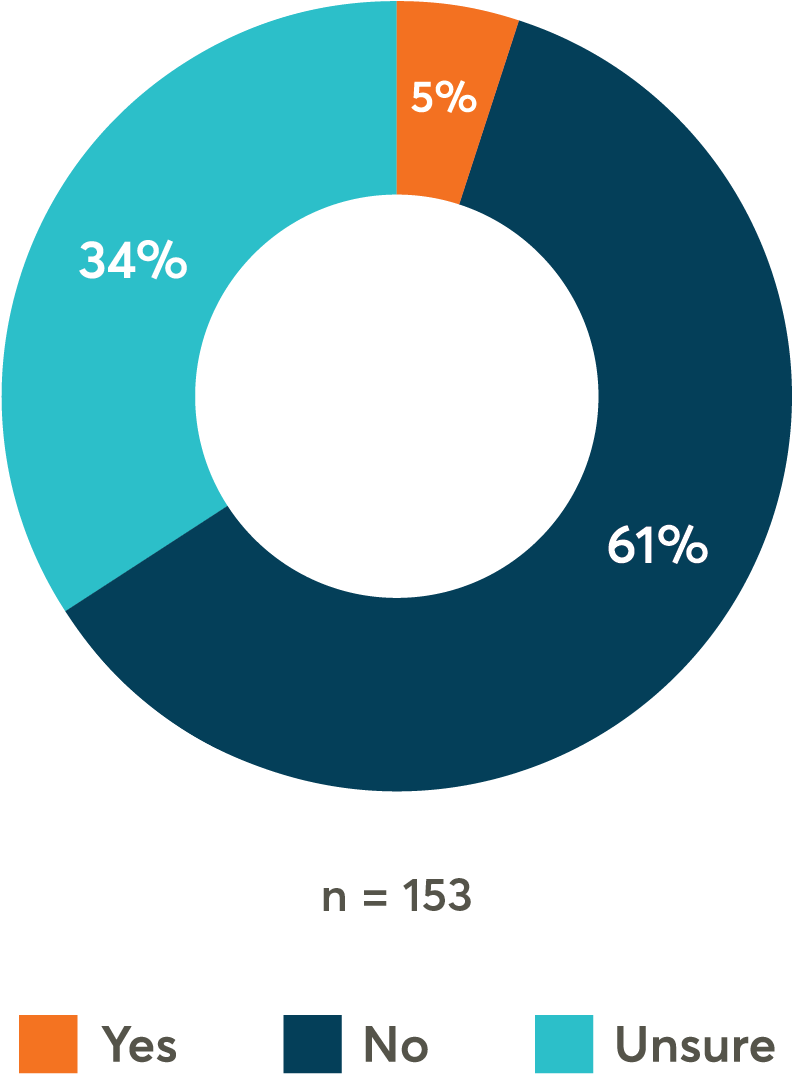Every month, Wellable asks a single question to the large, growing, and dedicated community of human resources and wellness professionals subscribed to the Wellable Newsletter. The question for January was about whether or not employers plan to adjust employee compensation plans to account for remote work.
Does your company plan to make significant adjustments to employee compensation plans to account for remote work?

Only a very small number of employers (5%) plan to make substantial changes in compensation for employees working remotely. However, over a third (34%) of employers remain undecided. Remote work has boomed in the past year, with many companies still considering all the changes that come with moving to long-term or permanent remote or hybrid work models. It is possible that more companies see the benefits of adjusting pay for employees residing in areas with a lower cost of living. Nonetheless, the majority of employers do not plan to make changes—and, after a year full of pandemic-related pivots, their employees will likely appreciate dealing with one less change to business-as-usual.
Cost Of Living Differences
One of the main reasons employers may make these adjustments in compensation is to account for the difference in the cost of living between where a company is located and where an employee resides. Since many employers are headquartered in expensive urban centers and business districts, it typically costs more to live close enough to work on-site compared to other smaller cities, suburbs, or rural areas where off-site employees may opt to reside. Thus, it can be an area where employers save a lot of money. However, some employees may feel that they are not being compensated fairly since they do not receive the same compensation as their coworkers doing similar work, and this could impact talent retention.
If employers choose not to adjust pay, they may still want to re-formulate benefit packages and wellness offerings to meet the different needs of both off-site and on-site workers. For obvious reasons, on-site perks—like healthy snacks, childcare resources, or fitness facilities—cannot be utilized by remote employees. Similarly, workers with physical office space and resources at a company would not need additional funds to purchase more home office equipment. Adjusting wellness packages for remote workers is likely to be a more agreeable option for employees that can also save money and resources for the employer.
Widening Gender Pay Gap
If employers do decide to make changes in compensation for remote workers, they will want to consider the demographic implications in doing so. Caregivers and single parents are more likely to be drawn to the flexibility of working from home; because these family responsibilities disproportionately fall on women, companies risk creating or widening a gender pay gap in their workforce.
This is especially true in light of the COVID-19 pandemic. For the first time in six years, researchers are seeing evidence that women are leaving the workforce at higher rates than men. The majority of caregiving responsibilities typically fall on women, and COVID-19 has increased these responsibilities with virtual schooling and the closure of childcare facilities. As a result, recent data suggests that women are less likely to return to work once pandemic-related restrictions end. Currently, the number of women working or looking for work is the lowest it’s been since 1988. About a quarter of working women say they plan to take on fewer work responsibilities or leave the workforce altogether due to the impacts of the pandemic. Potentially, years of progress made in narrowing the disparities in compensation between working men and women could be undone.
Even employers that do not adjust pay for remote workers risk impacting a gender pay gap. Not only are people that work on-site for a company typically paid more, but they are more likely to get promotions. In recent years, progress has been made in increasing the number of women in leadership and C-suite positions—but remote work could stall or reverse these gains. If women are more likely to switch to off-site work models to accommodate growing family responsibilities, employers can provide caregiving support that prevents them from either leaving on-site work or stepping down from higher-paid leadership roles.












